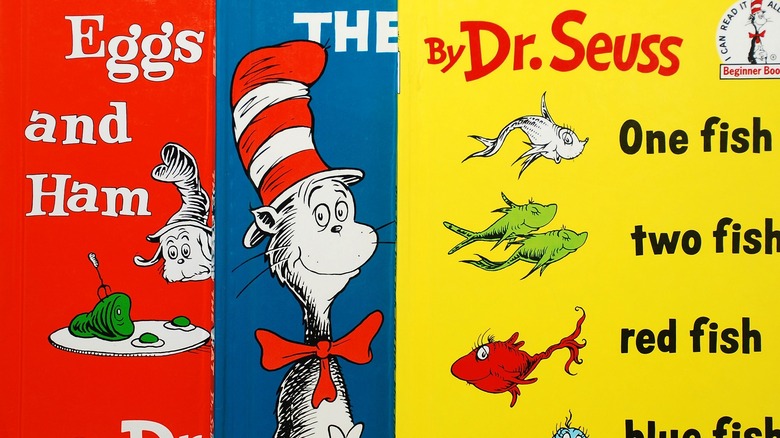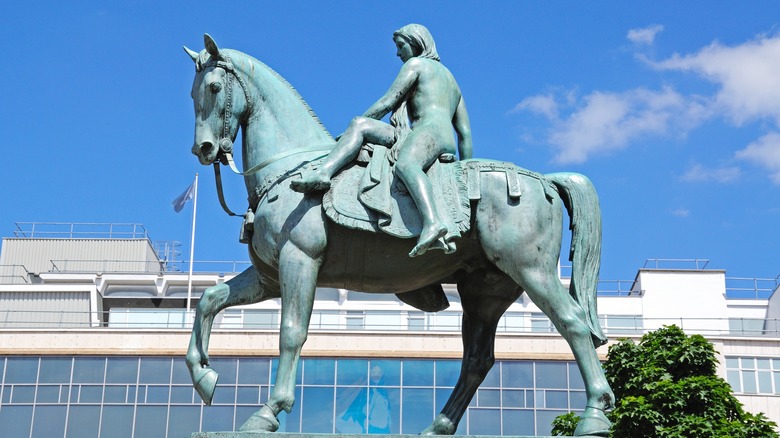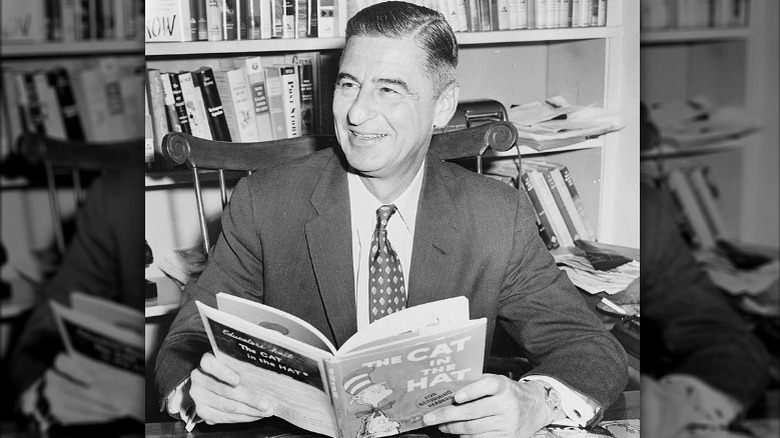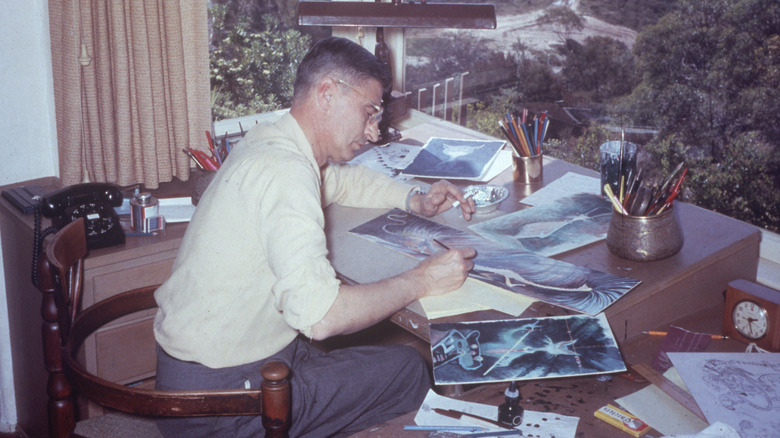One Of Dr. Seuss' First Books Was Definitely Not Meant For Kids
Dr. Seuss — or Theodor Seuss Geisel — is famous as the author of beloved children's classics like "Green Eggs and Ham," "The Cat in the Hat," and "How the Grinch Stole Christmas." However, it turns out that not all of his books were exactly kid friendly. One of his earliest publications was a picture book for adults about a family of nudists: "The Seven Lady Godivas."
The book was a special request from the author, who published his first children's book in 1937, "And to Think That I Saw It On Mulberry Street." That book was rejected by almost 30 different publishing houses before being accepted by Vanguard Press, according to Britannica. Geisel published one more children's title for Vanguard — 1938's "The 500 Hats of Bartholomew Cubbins" — before moving to Random House in 1939 (via The Atlantic). However, upon switching houses, he made a request to Random House publisher Bennett Cerf, according to The Atlantic. Geisel wanted to write a book for adults before penning any more for young people. That book ended up being 1939's "The Seven Lady Godivas: The True Facts Concerning History's Barest Family." It would also be his only book in prose, according to Publisher's Weekly.
Bare inspiration
The inspiration for Theodor Seuss Geisel's volume of adult literature was the legend surrounding real medieval noblewoman Lady Godiva, or Godgifu, according to History. Godiva lived in 11th century England and was married to Leofric, himself the Earl of Mercia and Lord of Coventry. She was both powerful and generous: She was the rare woman at the time who actually owned land and she gave money to help establish a Benedictine monastery. However, around a century after her death, a monk named Roger of Wendover got a little creative when telling her story.
According to the legend first recorded by Wendover, Godiva's husband Leofric liked to tax his people a bit too much. Godiva stood up for the little guy and asked her husband to reduce the tax burden, but he wasn't having it. He told her the only way he would lower taxes would be if she road through the town naked on horseback. Godiva agreed, with one request. The townspeople should close their doors and shutters and not watch her as she passed. Centuries later, during the 1500s, a new addition to the legend emerged. This centered around a rascal named "Peeping Tom" who couldn't resist taking a peak at the passing Godiva and was blinded for his infraction.
Dr. Seuss's Lady Godiva(s)
In his retelling, Theodor Seuss Geisel took quite a few liberties with the Lady Godiva legend. First of all, he upped the number of nude Godiva women from one to seven. He also changed the Lord of Coventry from the husband to the Godiva family patriarch, who is killed after being tossed from his horse, according to Publisher's Weekly. This inciting incident prompts the seven Godiva sisters to swear off marriage until they have "brought to the light of the world some new and worthy Horse Truth, of benefit to man" (via The Atlantic). Peeping Tom is also multiplied by seven and recast as the fiances who must wait to marry until the sisters have uncovered truisms like "Don't put the cart before the horse," according to Publisher's Weekly.
In the foreword to the book, Geisel presented himself as restoring the reputation of the legendary protagonists. He said the sisters' nakedness "actually was not a thing of shame." Further, he said that Tom had not peeped at all. "'Peeping' was merely the old family name," he wrote, "and Tom and his six brothers bore it with pride." Overall, he described the book as "a beautiful story of love, honor, and scientific achievement [that] has too long been gathering dust in the archives."
'Obsolete children'
Perhaps Lord Coventry, Lady Godiva, and Peeping Tom would have preferred it if Theodor Seuss Geisel hadn't tried to restore their reputations, however. "The Seven Lady Godivas" was a commercial failure. Only around 2,500 of an initial print run of 10,000 copies sold, according to The Atlantic. "[H]is women aren't as interesting as the real Lady G.," Publisher's Weekly opined, and the prose fell flat. The nudity also wasn't particularly attractive, either. "I attempted to draw the sexiest babes I could, but they came out looking absurd," Geisel later reflected (via The Atlantic). He also told The Washington Post that it was his "biggest failure."
However, the failure of "The Seven Lady Godivas" paved the way for future success, since Geisel chose to focus on children's books going forward. "I'd rather write for kids," he reflected later, according to his New York Times obituary. "They're more appreciative; adults are obsolete children, and the hell with them." Geisel did write one more book for "obsolete children" eventually: "You're Only Old Once!" The book was published in 1986 and told the story of an old man dealing with the indignities of aging with the same rhyming narrative and colorful illustrations as Geisel's children's titles. He wrote it in his 80s while he himself was battling oral cancer, and it resonated with his aging readers. "The kids I first wrote for. ... are not old poops yet but they have their feet in the door," he said.



